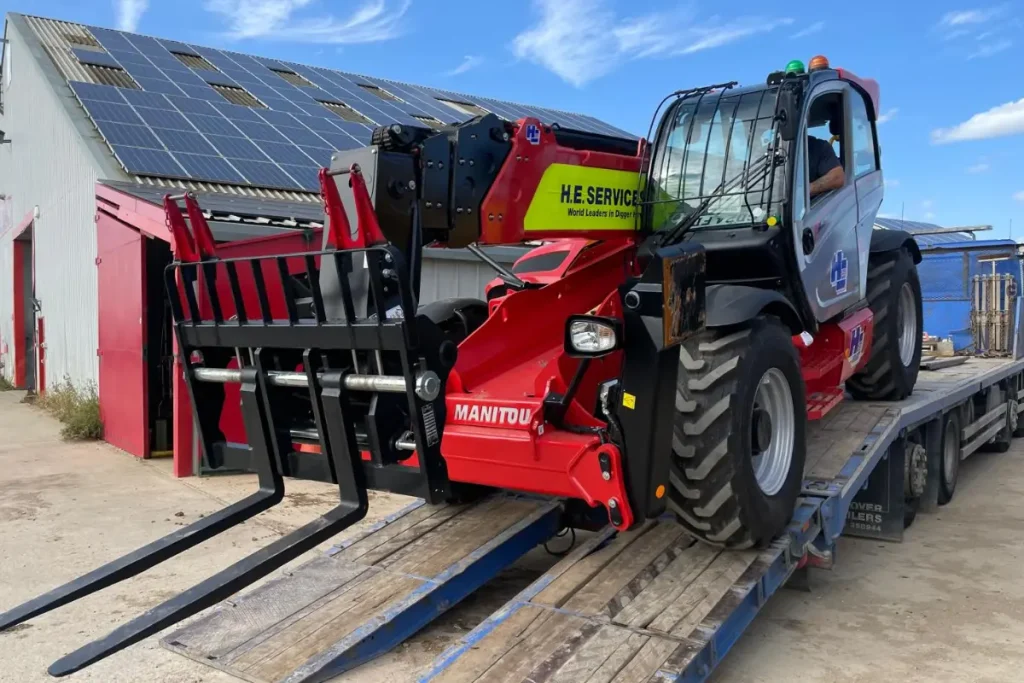In construction, every project relies on the right equipment to keep things running efficiently. Whether you’re lifting materials, loading pallets, or placing heavy items at height, a telehandler is one of the most versatile machines on site. For many contractors, hiring a telehandler has become the most practical way to access this capability without the expense of buying outright.
What is a Telehandler and What is it Used For?
A telehandler, short for telescopic handler, combines the lifting power of a forklift with the reach and flexibility of a crane. It’s built to handle a wide range of materials and comes with different attachments to adapt to various tasks.
Key benefits of telehandlers include:
Impressive reach and lift height for moving materials where access is limited
The ability to use different attachments, such as buckets or lifting hooks, for multiple site tasks
Excellent stability and control, even on rough or uneven terrain
Increased site safety by reducing manual handling and heavy lifting
From construction and agriculture to warehousing and utilities, telehandlers are relied upon for their strength, precision, and adaptability.
Projects That Benefit from Telehandler Hire
Telehandlers are used across a wide range of industries and project types, providing vital lifting and transport support wherever needed. Some common applications include:
Residential and commercial builds: transporting materials like bricks, beams, and pallets to upper levels
Infrastructure projects: moving and placing heavy materials along roads and rail developments
Agricultural work: lifting feed, hay bales, and equipment around farms
Utility and maintenance jobs: supporting access and lifting operations in restricted areas
Across the UK, telehandlers are proving invaluable on major developments such as new housing schemes in Kent, transport improvements in the Midlands, and infrastructure projects around London. Their versatility and reliability make them essential for keeping these projects on schedule.
Why Hiring a Telehandler Makes Sense
Owning heavy machinery can be expensive and inflexible, especially for short-term or seasonal work. That’s why hiring a telehandler is a smarter solution for many contractors.
Benefits of hiring include:
No upfront purchase costs, freeing up capital for other project needs
Flexible hire terms to match short or long project timelines
Access to the latest, most efficient machines
Regularly maintained equipment, reducing downtime
No need for storage or long-term maintenance once the job is complete
Hiring provides contractors with modern, reliable machines exactly when they’re needed, helping projects run more efficiently without unnecessary overheads.
Why Choose H. E. Services
At H. E. Services, we take pride in offering an extensive and up to date telehandler fleet. With reach options from compact 4-metre models to large 20-metre machines, we can support every type of site requirement.
Our team provides expert advice to help you select the right equipment for your project, and with 11 depots located nationwide, we ensure fast, reliable delivery wherever you are. Every machine in our fleet is regularly serviced and maintained to the highest standards, giving you complete peace of mind on site.
When it comes to hiring a telehandler, we provide the strength, reliability, and support you need to keep your project moving forward.
Give us a call on: 0208 804 2000 or email us for a quote.
For more special offers and construction news, don’t forget to follow us on social media:
Facebook – https://www.facebook.com/planthireHE/?locale=en_GB
LinkedIn – https://www.linkedin.com/company/h-e–services-plant-hire-ltd/
Instagram – https://www.instagram.com/planthirehe/
Information correct as of: November 2025







